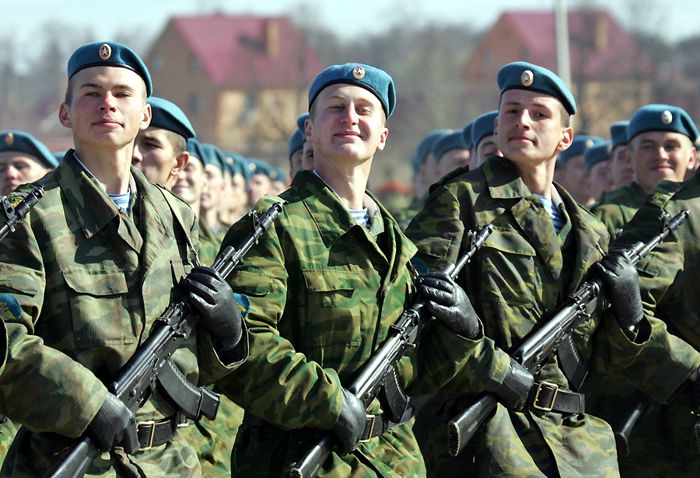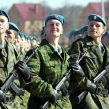
Shamanov Fights for VDV’s Future
Publication: Eurasia Daily Monitor Volume: 9 Issue: 150
By:

Since the reform of Russia’s conventional armed forces began in October 2008, Colonel-General Vladimir Shamanov has fought to protect the country’s elite airborne forces (Vozdushno Desantnye Voiska – VDV) from many of the main elements of the transformation process. While the Armed Forces were downsized, officer cuts implemented at breakneck speed with later reversals and the old divisions melted into “new look” brigades, Shamanov preserved the VDV’s divisional structure and has since attempted to promote its interests at every opportunity. However, the relentless process of correcting the errors in the reform overseen by Defense Minister Anatoliy Serdyukov, which has led Russian military analysts to coin the term “Serdyukovshchina” (mixing the minister’s name with “dedovshchina” or institutionalized hazing in the military), has left even General Shamanov hard pressed to defend either the reform or the current plight of modernizing the VDV (RIA Novosti, August 2).
The VDV is currently training to participate in major military exercises to test combat readiness and the capabilities of the CSTO Collective Rapid Reaction Forces (Kollektivnye Sily Operativnovo Reagirovaniya – KSOR) as well as large-scale war games Kavkaz-2012. Since the beginning of the year, Shamanov has switched the VDV’s training away from a large-scale focus to conduct more platoon-level and tactical-level drills, as well as a smaller number of battalion-level exercises. In September, according to Shamanov, the VDV will join KSOR in Armenia to strengthen interoperability among the joint forces (Interfax, August 1).
“Celebrating” VDV Day on August 2, Shamanov and senior defense officials promoted the “winged infantry,” and various commentaries noted the continued importance of the 35,000-strong airborne forces as the “first in” when any conflict erupts. President Vladimir Putin promoted Shamanov to Colonel-General in June 2012, thus prolonging his term of service, while he retains the post of commander of the VDV. However, the close friendship between Putin and Shamanov goes beyond recalling the latter’s service in Chechnya, a cause of controversy for many due to his alleged brutality. Both also remember the decisive role played by the VDV in the Five Day War against Georgia in August 2008. Yet, both Putin and General Shamanov are equally realistic about the immense challenges facing the VDV in the future, especially linked to modernization and manpower (Interfax, RIA Novosti, August 2).
The numbers of contract personnel (kontraktniki) serving in the VDV has fallen since 2008. However, this level of contract service varies widely in the VDV units. The VDV has five “rapid reaction” battalions and each maintains higher levels of kontraktniki. Shamanov stated that in Tula and Ryazan regions, the VDV units have no more than 15 percent to 20 percent kontraktniki, though one airborne unit in Ulyanovsk is manned by 60 percent contract personnel. A significantly higher level of kontraktniki numbers is found in a VDV artillery regiment in Kostroma, 350 kilometers from Moscow. Thus, the level of combat readiness in the VDV, like the Ground Forces, is actually quite varied (Krasnaya Zvezda, August 2; RIA Novosti, August 1).
The upward trend in kontraktniki numbers is no surprise, but Russian officers have heard all such promises before, stretching back to President Boris Yeltsin who affirmed the target in the 1990s of full contract manning. The latest drive to enhance contract personnel numbers in the Armed Forces sets the target at 450,000 by 2017. Nevertheless, during his visit on August 2 to the VDV base in Ulyanovsk, Putin referred to this target and said he did not know if it could be achieved – it depended on the budget – but in the view of the Commander-in-Chief, it was “worth trying” (Krasnaya Zvezda, August 2). This is hardly a vote of confidence in the process of recruiting higher numbers of kontraktniki to serve in Russia’s Armed Forces; and Putin, above anyone else, should know the limitations involved.
Shamanov, therefore, faces a continued battle to avoid Serdyukovshchina hitting the VDV, particularly affirming that the divisional structure must remain in place over the next five years, justified due to “global changes” in the major combat arms of service. But he must also introduce new BMD-4M combat vehicles into the VDV’s inventory in sufficient numbers (Interfax, June 12). Despite Shamanov championing the BMD-4M, there is still no agreement on the issue among the key players in the Defense Ministry, General Staff or the defense industry. Shamanov laments the huge imbalance in favor of the old BMD-2s currently in service in the VDV. Putin has instructed an interdepartmental committee headed by Deputy Prime Minister Dmitry Rogozin, to study the issue. It seems the final decision will be in Putin’s hands, and it is unclear if his friend General Shamanov will prevail (https://nvo.ng.ru/armament/2012-07-27/10_desant.html).
Shamanov sees the BMD-4M as the best choice, though he is not entirely convinced of its merits. He is aware that the VDV simply needs to make a breakthrough in acquiring such new hardware. It will be equipped with a new tracking system developed by Kurganmash with improved armor. Shamanov believes the new digitized BMD-4M cannot be delivered to the VDV in large numbers until 2016 at the earliest, and so he wants to commence receiving the BMD-4M in its current form as soon as possible. He trusts these can then be modernized later. Shamanov is also skeptical about whether the new unified Kurganets-25 chassis can be taken into service in the VDV and doubts if the VDV and Ground Forces can achieve total unification of equipment based on weight requirements (https://ria.ru/defense_safety/20120510/645801095.html; https://gurkhan.blogspot.com/2012/05/4.html).
There are a number of interesting points in Shamanov’s recent statements, supported by Putin’s sobering insight on kontraktniki plans. The number of contract personnel in the VDV is currently relatively low; this indicates the General Staff is not expecting war anytime soon. The varied contract numbers in VDV units show that in a crisis they could cobble together a response, though perhaps not the best one. And the rate of modernization is glacial and subject to the influence of personality and the weakness of the defense industry. Moreover, on the wider implications, both Putin and Shamanov understand the reform of the Armed Forces is in a total mess; four years after the “new look” reforms began, the contract personnel numbers are low in the Armed Forces, and the message to the top brass is “wait” for five years and things might become better – somehow.




